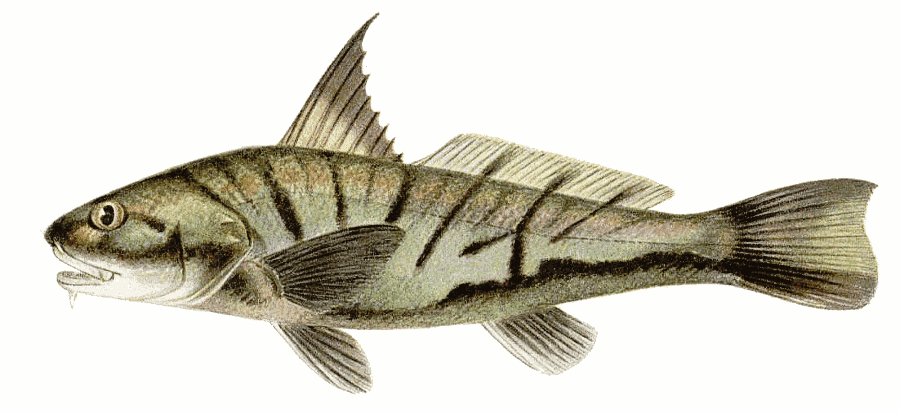Northern Kingfish

Species Details
Menticirrhus Saxatilis
Sciaenidae
Perciformes
Onshore, Nearshore, Offshore, Reef, Wreck
1 - 3 lbs.
10" - 18"
Northern Kingfish (Menticirrhus saxatilis) Fish Description
The Northern Kingfish (Menticirrhus saxatilis) is a popular saltwater gamefish found just in shallow coastal waters of the Atlantic. It is targeted by fishing enthusiasts not only for its delicious white meat but because this feisty fish can be quite a challenge to catch.
The Northern Kingfish is a member of the drum family, Sciaenidae. Its body is a bit slim except for the plump pectoral area just behind its head. The upper part of the body has a greenish bronze color while the lower part is mostly silver. The top part also has dark uneven angular markings which form a “V” on the first two bars.
The Northern Kingfish can also be identified through the tall triangular first dorsal fin situated parallel to its pectoral fins. The second dorsal fin, on the other hand, is long, starting where the first dorsal ends, and ends just before it reaches the fish’s tail base. Both dorsal fins are spiny. This fish has cat-like eyes because of the vertical pupils. Also, it has a single whisker or barbel located just below its mouth.
The spawning season typically starts in April and ends in August. Their eggs stay afloat after they are released because of the oily encasements they are in. And because they are afloat, the eggs would just drift with the current until they hatch in less than two to three days. The larvae are said to look a bit like tadpoles because of their large heads and small bodies. In five to six months, they would already be in their juvenile stage reaching a length of about eleven to twelve inches. In about two to three years, they would be sexually mature. Their average lifespan tends to be just between three to four years.
The Northern Kingfish is a carnivore and a known bottom feeder. It mainly preys on small fishes, mollusks, worms, crabs, shrimps, and other bottom dwellers. When the food is hard to come by, it may even turn to scavenge, eating dead animals it may find at the bottom. It also uses the barbel on its chin to feel, taste, and smell its surroundings as it looks for food.
Northern Kingfish Interesting Facts
- The largest Northern Kingfish ever caught measures almost two feet and weighs a little more than three pounds.
- The world record fish was just a by-catch by commercial fishers using gillnets.
- Although it’s a member of the drum or croaker family, the Northern Kingfish does not produce any sound characteristic to its family.
- The Northern Kingfish is a demersal fish, often found at the bottom of the ocean.
- It can live in areas of the water where the salinity level is low.
- Juveniles are sometimes found in tidal rivers and creeks.
- The Northern Kingfish is a popular target for anglers looking for a bit of a challenge as this fish is known to put up a good fight when hooked despite its diminutive size.
Northern Kingfish Size and Swimming Speed
The Northern Kingfish is a rather small fish that can only grow as much as eighteen inches. Average sizes tend to be just around ten to fourteen inches long, weighing between half to one and a half pounds. Also, what it lacks in size, makes up for its speed as it’s known for its relative quickness, especially when it feels threatened.
Northern Kingfish Habitat and Distribution
The Northern Kingfish can be found throughout near the coasts of the eastern seaboard—from Maine to Florida. It is also known to inhabit the eastern side of the Gulf of Mexico—from the Keys to the Yucatan Peninsula. They are also seen swimming in small schools near or on the seabed, often in rocky or sandy bottoms. Although they mostly prefer living in the shallower parts of the water, they may migrate to the deeper parts during winters.
Northern Kingfish Fishing Tips
Fishing for the Northern Kingfish is often done either on a boat close to the shore, or on piers, jetties, or in the surf. If you’re specifically targeting this fish, it is said that they are most abundant near the shores during late summer. For the gear, a light tackle paired with a small hook is the best way to go as this fish does not grow that big. For bait, you can either use clams or bloodworms. You can also use squid cut into tiny pieces.







